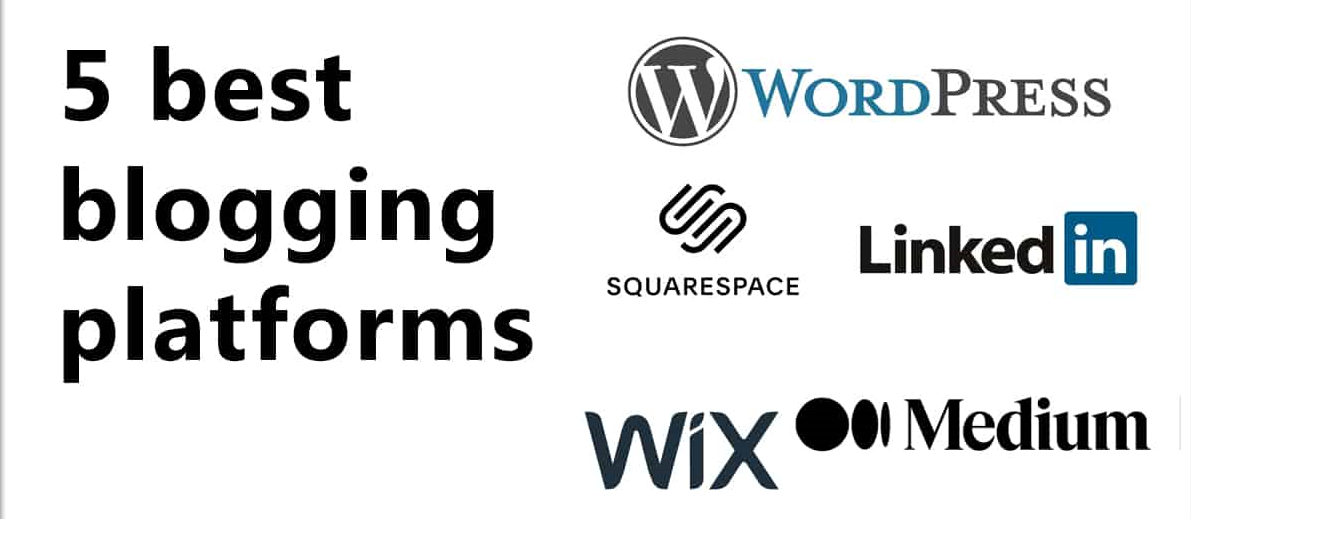Starting a blog is an exciting endeavor, but one of the first important decisions you’ll face is choosing the right blogging platform. The platform you choose will affect your blog’s design, functionality, and how easily you can grow and manage your content. With so many blogging platforms available, it can be difficult to decide which one best suits your needs.
In this guide, we’ll walk you through the key factors to consider when choosing a blogging platform and highlight some of the most popular options to help you make an informed decision.
1. Define Your Blogging Goals
Before you even look at platforms, it’s crucial to understand what you want to achieve with your blog. Are you blogging for fun, to share your expertise, or do you want to eventually make money? Your goals will dictate the type of platform that works best for you.
- Personal Blogging: If you’re simply sharing your thoughts, experiences, or hobbies, a free and easy-to-use platform may be enough.
- Professional Blogging: If you aim to build a brand, attract an audience, or monetize your content, you’ll need more control and customization options.
- Business Blogging: For those looking to integrate a blog into a business website, having full control over design and functionality is crucial.
Having clear goals will help you narrow down the platforms that best align with your vision.
2. Ease of Use
If you’re new to blogging or website building, you’ll want a platform that’s user-friendly and easy to navigate. Many platforms offer a drag-and-drop interface, allowing you to design your blog without needing technical skills. However, some platforms are more beginner-friendly than others.
Platforms to consider:
- WordPress.com: A fully hosted, easy-to-use platform with many templates. It’s a great starting point if you want something simple but professional.
- Blogger: A straightforward platform owned by Google. It’s perfect for beginners who want a free, no-fuss blog.
- Wix: Known for its drag-and-drop interface, Wix is beginner-friendly with many design options for creating a visually appealing blog.
If you prefer to dive in without a steep learning curve, these platforms are great options.
3. Customization and Design Flexibility
The design of your blog plays a huge role in user experience and can help set your blog apart from others. Some platforms offer a variety of themes and design options, while others might be more limited.
If you need a high degree of customization (like a unique layout or more advanced features), it’s best to go with a platform that allows flexibility in design.
Platforms to consider:
- WordPress.org (Self-hosted): Offers complete control over design, with thousands of themes and plugins. Ideal if you want to tailor your blog’s appearance and functionality to fit your brand.
- Squarespace: Offers beautifully designed templates that are highly customizable, without needing to know code.
- Webflow: Provides more advanced design flexibility for those who are willing to learn or have prior design experience.
For total creative freedom, a self-hosted WordPress site would be the most suitable choice.
4. Monetization Options
If monetizing your blog is part of your plan, you’ll want a platform that provides tools for earning money, such as the ability to display ads, promote affiliate products, or sell your own digital products.
Some platforms offer built-in monetization features, while others may require additional plugins or third-party services.
Platforms to consider:
- WordPress.org (Self-hosted): Offers the most flexibility when it comes to monetization. You can integrate affiliate links, ads, eCommerce, and much more.
- Medium: A great platform for writers looking to monetize their content through the Medium Partner Program. However, it doesn’t offer the same level of control as other platforms.
- Wix: Allows users to add ads, sell products, and even run an online store.
For maximum monetization opportunities, WordPress.org (self-hosted) is often the best choice due to its wide range of plugins and monetization tools.
5. Scalability and Growth Potential
Think about the future growth of your blog. Will you eventually need to scale it up to accommodate more traffic, additional pages, or even a full-fledged online store? Some platforms make it easier to grow, while others might be limiting as your blog expands.
Platforms to consider:
- WordPress.org (Self-hosted): The best option for scaling. You can move your blog to a more powerful server, install additional plugins, and upgrade as your needs grow.
- Squarespace: Ideal for small-to-medium blogs but might have limitations as you scale up in terms of customizations.
- Blogger: While it’s easy to use, it’s somewhat limited in terms of growth, especially when you need advanced features.
If you have long-term growth plans, choosing a scalable platform is crucial, and WordPress.org remains the top choice for scalability.
6. Support and Community
If you encounter issues or need help, it’s important to choose a platform that offers good customer support and has a thriving community of bloggers to help you out.
Platforms to consider:
- WordPress.org (Self-hosted): WordPress has one of the largest user communities and tons of online forums, tutorials, and guides. However, support is not included in the free version, so you may need to hire a developer for technical issues.
- WordPress.com: Includes support with the premium plans, but the free version offers only limited customer service.
- Wix: Offers a robust help center and customer support with all plans, including live chat for premium users.
- Blogger: Has a basic support structure and is less community-driven than WordPress, but it’s good for beginners.
If ongoing support is essential for you, platforms like Wix or WordPress.com (premium version) offer great customer service.
7. Cost
The cost of blogging platforms varies, from completely free platforms to those that require a paid plan or hosting. While a free option might seem attractive, many paid platforms provide additional features, customization, and better overall performance.
Free options:
- Blogger: Free to use with a Blogger subdomain (e.g., yourblog.blogspot.com).
- WordPress.com: Offers a free version with limitations.
Paid options:
- WordPress.org (Self-hosted): While the WordPress software itself is free, you’ll need to pay for web hosting and a domain name. Costs typically start around $3–$10 per month for hosting.
- Squarespace: Plans start at around $12 per month, which includes hosting and a custom domain.
- Wix: Plans start at $14 per month and include hosting, a domain, and additional features.
If you have a limited budget but want a professional blog, WordPress.com and Blogger are solid free options. However, if you’re serious about blogging and want full control, investing in a self-hosted WordPress site is highly recommended.
Conclusion: Which Blogging Platform Is Right for You?
Choosing the right blogging platform depends on your specific needs, goals, and budget. Here’s a quick recap of recommendations based on different needs:
- Best for Beginners: WordPress.com, Wix, and Blogger
- Best for Full Control and Customization: WordPress.org (Self-hosted)
- Best for Beautiful Design and Simplicity: Squarespace and Wix
- Best for Scalability and Monetization: WordPress.org (Self-hosted)
- Best for Business Blogs: WordPress.org or Squarespace (if you want an all-in-one solution)
Take the time to evaluate your goals, consider your long-term plans, and choose a platform that supports your blog’s growth. No matter which platform you choose, consistency, quality content, and engaging with your audience are key to your success in the blogging world.

